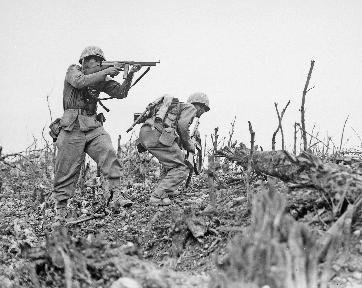Quiz Answer Key and Fun Facts
1. The Waffen-SS was under the control of Heinrich Himmler before the start of WWII (though under a different name), but later fell under tactical control of the High Command of the Armed Forces, and it was always considered to be an "elite" unit. It consisted of Aryans only (often loosely defined).
2. In June 1934, what event took place that established the supremacy of the SS over its rival faction, the SA (the Sturmabteilung or Stormtroopers)?
3. What particular group of people made up the 'Sonderkommando' or 'special units' that oversaw the removal of bodies from the gas chambers to the ovens in the extermination camps?
4. There were many different branches of SS troops, and during the later years of World War II the largest branch - the Waffen SS - served as combat troops, while others were found in a variety of roles. Which branch was responsible for administering the Nazi concentration camps and extermination camps?
5. As WWII drew to a close in Europe, many SS members, along with others in the Nazi leadership hierarchy, escaped to South America. What was the name of the organization that they developed to assist them in their plans to flee?
6. What type of units were the "Einsatzgruppen"?
7. 73 of a total of 75 members of the Waffen-SS were charged with war crimes as the result of one infamous massacre of U.S. troops during the Battle of the Bulge. In what Belgian town did this atrocity occur?
8. "The Road to Heaven" was a path upon which Jewish prisoners were marched naked as they entered the gas chambers. The "Road to Heaven" was the name of several such paths, but at which camp in Poland was the most well-known of these sickeningly named "roads" to be found?
9. One of Hitler's most remarkably dedicated sadists, Klaus Barbie, "The Butcher of Lyon" was the SS officer in charge of the Gestapo in Lyon, France. Adolf Hitler himself awarded Barbie with the "Iron Cross First Class with Swords" for his especially brutal and cruel crimes against humanity.
10. Eric Brown, a British naval pilot, who interviewed some Nazis for the Belsen Trials, once described this female SS guard at concentration camps at Ravensbrück, Auschwitz, and Bergen-Belsen as "the worst human being I have ever met." Who was this former SS guard?
Source: Author
logcrawler
This quiz was reviewed by FunTrivia editor
bloomsby before going online.
Any errors found in FunTrivia content are routinely corrected through our feedback system.

